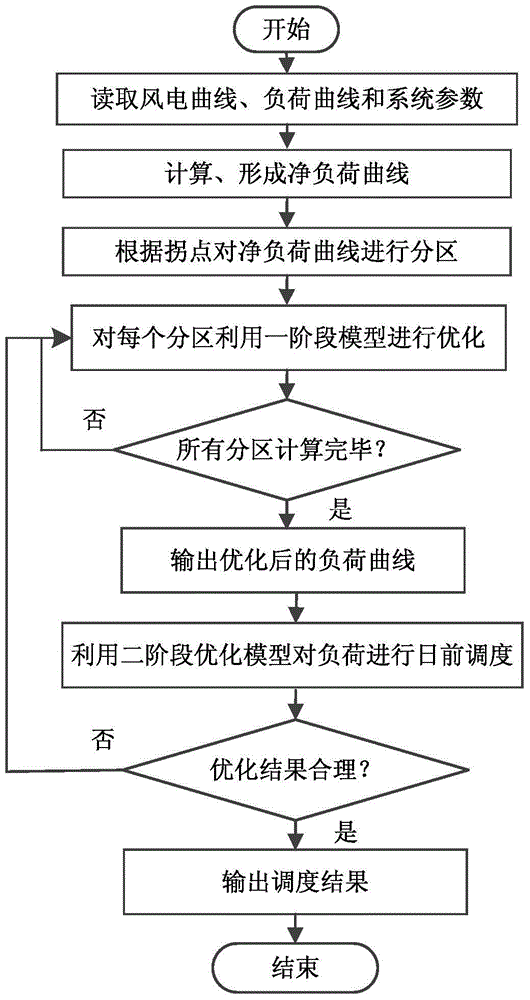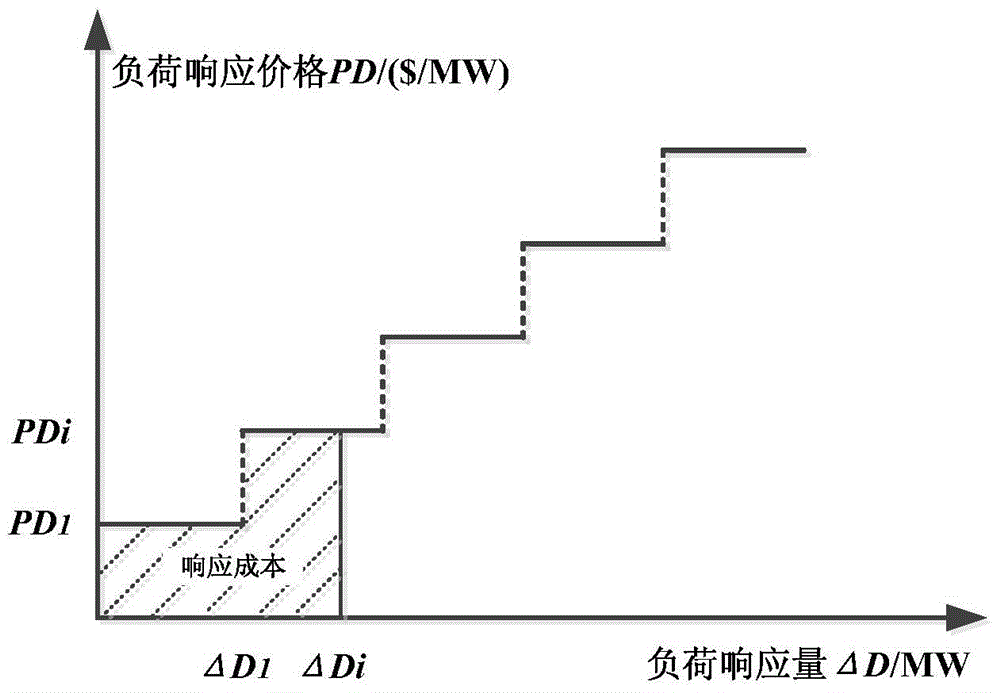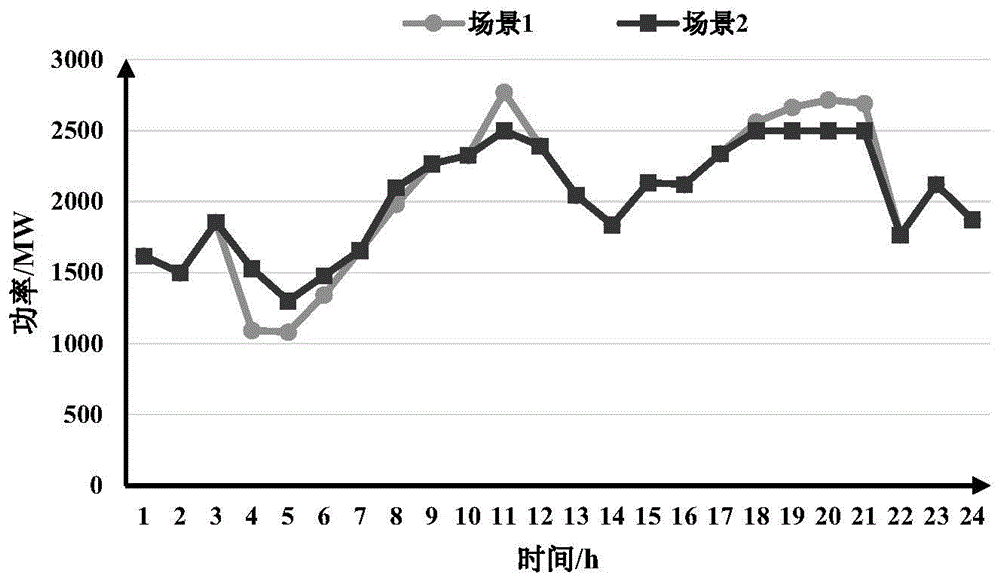A two-stage source-load scheduling method and device considering peak shaving and slope climbing requirements
A scheduling method and a technology of climbing demand, which are applied in the direction of single-grid parallel feeding arrangement, wind power generation, etc.
- Summary
- Abstract
- Description
- Claims
- Application Information
AI Technical Summary
Problems solved by technology
Method used
Image
Examples
Embodiment 1
[0047] A two-stage source-load scheduling method considering peak-shaving and ramp-up demands, see figure 1 , the scheduling method includes the following steps:
[0048] 101: Divide the net load curve according to the inflection point of the net load curve; analyze the peak-shaving demand of the power system and the climbing demand between each time period based on the net load curve;
[0049] 102: Optimizing the net load curve for each partition using a one-stage incentive demand response optimization model;
[0050] 103: When all partitions are calculated, output the optimized load curve;
[0051] 104: Based on the optimized load curve, use the two-stage scheduling model for day-ahead scheduling;
[0052] 105: When the optimal scheduling result is reasonable, that is, when all constraint conditions are met, the scheduling result is output, and the process ends.
[0053] Wherein, the scheduling method also includes:
[0054] When the calculation of all partitions has not...
Embodiment 2
[0063] The scheme in Embodiment 1 is described in detail below in conjunction with specific calculation formulas and examples, see the following description for details:
[0064] 201: Read wind power forecast output, load and power system data; subtract the power system day-ahead load forecast curve from the wind power forecast curve to obtain the net load curve of conventional thermal power units; divide the net load curve according to the inflection point of the net load curve; Analyze the peak-shaving demand of the power system and the climbing demand between each time period based on the net load curve, and calculate the peak-to-valley difference of the net load curve and the climbing demand of each time period and each partition;
[0065] 202: Optimizing the net load curve for each partition using a one-stage incentive demand response optimization model;
[0066] Among them, the net load curve of the large-scale wind power system is optimized and corrected. While reducing...
Embodiment 3
[0121] Combined with the following specific tests, the attached image 3 To verify the feasibility of the scheme in Examples 1 and 2, see the following description for details:
[0122] Taking the IEEE 36-node 10-machine power system as an example, when wind power with an installed capacity of 600MW is connected, the upper and lower limits of demand response are plus or minus 15% of the maximum load. Two scenarios are set, Scenario 1 is scheduling without considering demand response and only considering the two-stage scheduling model in step 204; Scenario 2 is considering demand response, using the two-stage optimization model in steps 202 and 204 for optimization. Comparison and reference of power system net load curves in two scenarios image 3 , the comparison of optimization results in the two scenarios is shown in Table 1:
[0123] Table 1 Comparison of optimization results in different scenarios
[0124]
[0125] Depend on image 3 It can be seen that comparing th...
PUM
 Login to View More
Login to View More Abstract
Description
Claims
Application Information
 Login to View More
Login to View More - R&D
- Intellectual Property
- Life Sciences
- Materials
- Tech Scout
- Unparalleled Data Quality
- Higher Quality Content
- 60% Fewer Hallucinations
Browse by: Latest US Patents, China's latest patents, Technical Efficacy Thesaurus, Application Domain, Technology Topic, Popular Technical Reports.
© 2025 PatSnap. All rights reserved.Legal|Privacy policy|Modern Slavery Act Transparency Statement|Sitemap|About US| Contact US: help@patsnap.com



